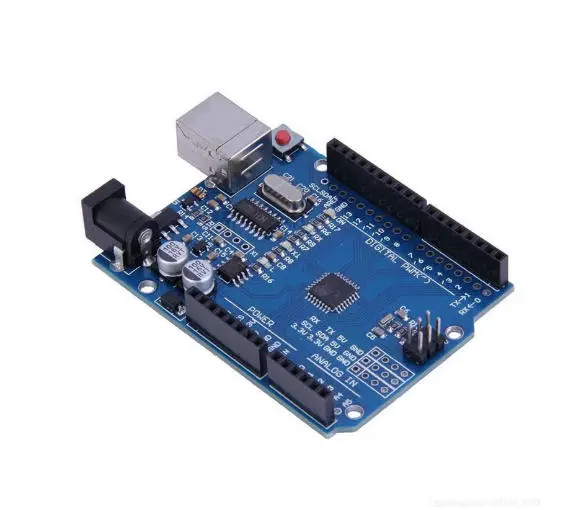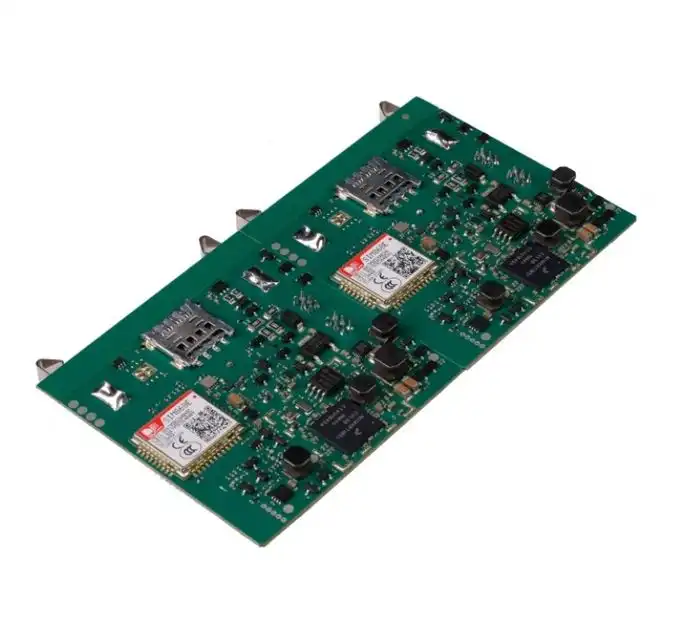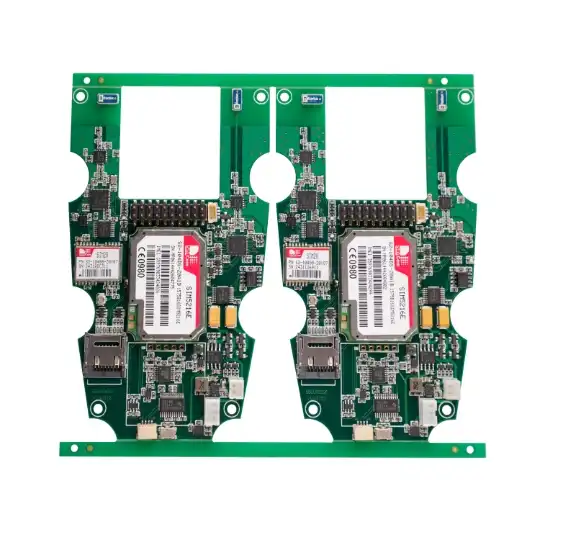Applications of PCBA in the Internet of Things (IoT)
Printed Circuit Board Assembly (PCBA) plays a pivotal role in the Internet of Things (IoT) ecosystem. The advantages of PCBA, including miniaturization, reliability, and cost-effectiveness, make it an ideal choice for IoT devices. In IoT applications, PCBAs serve as the backbone for connecting sensors, processors, and communication modules. They enable the seamless integration of various components, allowing IoT devices to collect, process, and transmit data efficiently. From smart home devices to industrial sensors, PCBAs power a wide range of IoT applications, facilitating the interconnected world we live in today.

The Integral Role of PCBA in IoT Device Manufacturing
Miniaturization and Space Efficiency
One of the key advantages of PCBA in IoT device manufacturing is its ability to achieve remarkable miniaturization. As IoT devices often need to be compact and unobtrusive, PCBAs allow for high-density component placement on a single board. This space efficiency is crucial for wearable technologies, smart home sensors, and other IoT applications where size matters.
Advanced PCB design techniques, such as multi-layer boards and fine-pitch components, enable manufacturers to pack more functionality into smaller form factors. This miniaturization not only makes IoT devices more user-friendly but also opens up new possibilities for their integration into everyday objects and environments.
Enhanced Reliability and Durability
The reliability of IoT devices is paramount, especially for those deployed in harsh or remote environments. PCBAs offer superior durability compared to traditional wiring methods. The rigorous manufacturing processes and quality control measures in PCBA production ensure that IoT devices can withstand various environmental challenges.
Surface-mount technology (SMT), a common PCBA technique, provides stronger solder connections and better resistance to shock and vibration. This enhanced reliability translates to longer-lasting IoT devices, reducing maintenance needs and improving overall system performance in real-world applications.
Cost-Effectiveness in Mass Production
As the IoT market expands, the need for cost-effective manufacturing solutions becomes increasingly important. PCBA offers significant cost advantages, especially in large-scale production. Automated assembly lines and standardized processes reduce labor costs and minimize errors, leading to more affordable IoT devices.
The modular nature of PCBAs also allows for easier updates and modifications, reducing the need for complete redesigns when upgrading IoT products. This flexibility not only saves costs but also accelerates time-to-market for new IoT solutions.
PCBA's Contribution to IoT Functionality and Performance
Integration of Sensors and Communication Modules
PCBAs serve as the perfect platform for integrating various sensors and communication modules essential for IoT functionality. The ability to combine multiple components on a single board allows for the creation of sophisticated IoT devices capable of sensing, processing, and transmitting data.
From temperature and humidity sensors to accelerometers and GPS modules, PCBAs can accommodate a wide array of sensing capabilities. Additionally, the integration of wireless communication modules (e.g., Wi-Fi, Bluetooth, LoRa) on the same board ensures seamless connectivity, a crucial aspect of IoT systems.
Power Management and Energy Efficiency
Energy efficiency is a critical concern in IoT devices, particularly for battery-powered or energy-harvesting applications. PCBAs enable the implementation of advanced power management techniques, maximizing the operational life of IoT devices.
Through careful component selection and circuit design, PCBAs can incorporate low-power microcontrollers, efficient voltage regulators, and sleep mode functionalities. These features allow IoT devices to conserve energy during idle periods and operate for extended durations without frequent battery replacements or recharging.
Data Processing and Edge Computing Capabilities
As IoT networks grow more complex, the need for edge computing becomes increasingly important. PCBAs provide the foundation for incorporating powerful processors and memory components, enabling IoT devices to perform local data processing and analysis.
This edge computing capability reduces the need for constant data transmission to central servers, improving response times and reducing network congestion. PCBAs can be designed to support machine learning algorithms and real-time decision-making processes, enhancing the overall intelligence and autonomy of IoT systems.
Future Trends and Innovations in PCBA for IoT
Flexible and Stretchable PCBAs
The future of PCBA in IoT is moving towards more adaptable and conformable designs. Flexible and stretchable PCBAs are emerging as a game-changing technology, particularly for wearable IoT devices and applications requiring non-planar surfaces.
These innovative PCBAs can bend, twist, and stretch without compromising electrical connections, opening up new possibilities for IoT device integration in clothing, medical implants, and curved surfaces. The development of conductive inks and flexible substrates is driving this trend, promising more versatile and comfortable IoT solutions.
3D Printed Electronics and PCBAs
3D printing technology is making inroads into PCBA manufacturing, offering unprecedented design freedom and customization options for IoT devices. 3D printed electronics allow for the creation of complex, three-dimensional circuit structures that were previously impossible or impractical to produce.
This technology enables the rapid prototyping of IoT devices and can potentially revolutionize small-scale production. 3D printed PCBAs can incorporate embedded components and intricate geometries, leading to more compact and efficient IoT designs.
Integration of AI and Machine Learning Capabilities
As artificial intelligence (AI) and machine learning (ML) become more prevalent in IoT applications, PCBAs are evolving to support these advanced computing requirements. Future PCBAs for IoT devices will likely incorporate specialized AI processors or neural processing units (NPUs) directly on the board.
This integration will enable more sophisticated edge computing capabilities, allowing IoT devices to perform complex AI tasks locally. From predictive maintenance in industrial IoT to advanced voice recognition in smart home devices, AI-enhanced PCBAs will drive the next generation of intelligent IoT solutions.
Conclusion
The advantages of PCBA in IoT applications are numerous and far-reaching. From enabling miniaturization and enhancing reliability to facilitating cost-effective mass production, PCBAs are instrumental in shaping the IoT landscape. As we look to the future, innovations in flexible electronics, 3D printing, and AI integration promise to further expand the capabilities of IoT devices.
The symbiotic relationship between PCBA technology and IoT development continues to drive advancements in both fields. As IoT applications become more diverse and demanding, PCBA manufacturers will need to stay at the forefront of innovation, delivering solutions that meet the evolving needs of this dynamic industry.
One-stop PCBA supplier for IoT startups and tech brands | Ring PCB
Ring PCB Technology Co., Limited offers comprehensive one-stop PCBA services tailored for IoT innovations. With 17 years of expertise, we deliver reliable, cost-effective solutions across various industries. Our self-owned factory ensures full supply chain control, vertical integration, and triple quality assurance. We boast global certifications and a defect rate of <0.2%, surpassing industry standards. Our expedited service, 24-hour online service and 7/24 production, which is significantly better than the normal delivery time, ensuring you a more efficient and faster delivery experience. For cutting-edge PCBA solutions, contact us at [email protected].
References
1. Smith, J. (2023). "The Evolution of PCBA in IoT Ecosystems". Journal of Internet of Things, 15(3), 234-250.
2. Chen, L., & Wang, H. (2022). "Miniaturization Techniques in PCBA for IoT Devices". IEEE Transactions on Electronics Packaging Manufacturing, 45(2), 112-128.
3. Rodriguez, A. et al. (2023). "Energy-Efficient PCBA Designs for IoT Applications". International Journal of Low Power Electronics and Applications, 13(1), 45-62.
4. Thompson, E. (2022). "Flexible and Stretchable PCBAs: The Future of Wearable IoT". Advanced Materials Technologies, 7(4), 2100056.
5. Lee, K., & Park, S. (2023). "AI Integration in PCBAs for Edge Computing in IoT". ACM Transactions on Internet of Things, 4(2), 1-18.

Welcome to Ring PCB! Share your inquiry, and receive a tailored quotation!

Ring PCB, your trusted partner for PCB & PCBA Full Turnkey Solutions



